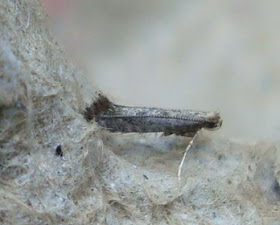Similarly to others, we seem in Wolvercote, Oxfordshire, to be having a poor season for some of the commoner species, but not bad in terms of overall numbers of species. Tuesday night was a good example, with the high temperatures attracting nearly 100 species, easily a garden record (with less of a breeze, I think we'd have broken three figures), but only a single Large Yellow Underwing, and no Heart and Darts at all (conversely, Heart and Club is having rather a good year).
It's been good to have our first Bordered Beauties for the year, as well as Green Arches (not a frequent species for our garden at all) and Vapourer.
 |
| Green Arches, 20/7/16 |
 |
| Vapourer, 19/7/16 |
We've a few queries, too, though: the usual recalcitrant micros, of which the first may be a rather faded
Argyresthia curvella and the second an
Ephestia unicolorella, about 7mm long; then a couple of macros, first a likely Sycamore, around 22mm long, and a faded but still, I think, distinct Plain Pug.










Brachmia blandella for your Ephestia. BW, Marc
ReplyDeleteI think your 'Ephestia' is Brachmia blandella. Possibly your badly beaten-up macro might be Double Square-spot. The Gracillarid might be a Parornix but, if I had to put money on it, I would say it's one of the Swammerdamia/Paraswammerdamia group (in the Yponomeutidae). Not sure of the species, however. I think you're right on the Sycamore. Pass on the pug.
ReplyDeleteMany thanks, both!
ReplyDeleteThe possible Gracillariid is indeed that, a Parornix which would need dissection to get to species.
ReplyDelete